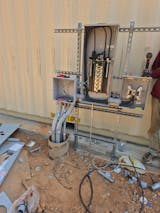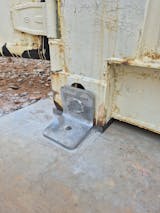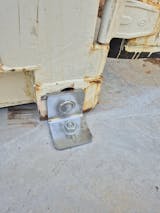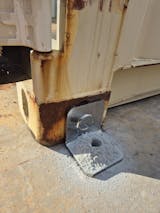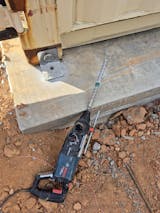
Shipping Container Anchoring Requirements: What You Need to Know
Share
Understanding Shipping Container Anchoring Requirements
At Container Nut, we get frequent calls from frustrated customers who are dealing with HOA and city violations regarding shipping containers. One of the most common points of contention? Anchoring. Many HOAs and cities tell homeowners they need to anchor their containers in a very specific way—often requiring anchors not only at the corners but also at intervals along the length of the container (such as the middle of a 20-footer or twice in the middle of a 40-footer).
While this may sound reasonable on the surface, it’s actually unnecessary, impractical, and potentially damaging to your container. Here’s why.
How Shipping Containers Are Engineered to Anchor
Shipping containers are designed for some of the harshest environments in the world. On cargo ships, they endure:
-
Long ocean voyages on choppy seas
-
Heavy loads stacked multiple containers high
-
Extreme lateral and vertical forces
Despite these conditions, containers are secured only at the four corners—never in the middle. Those four corner castings are engineered to handle the full weight and stresses placed on the unit. That is why all international container handling equipment, from twist-locks to stacking systems, is built to engage exclusively at the corners.
Why Anchoring in the Middle Doesn’t Work
HOAs and cities often require “extra anchors” in the middle of the container, but this is both unnecessary and problematic:
-
No Structural Anchor Points
Containers don’t have anchor-ready castings in the middle of their side rails or floor. Installing an anchor there requires drilling through steel or welding on new hardware, both of which compromise the container’s structural integrity. -
Engineering Redundancy
Middle anchors don’t provide additional security because the design strength is already located at the corners. Anchoring in the middle is like putting an extra seatbelt on the roof of your car—it doesn’t improve safety because it isn’t tied into the structural load points. -
Damage Risk
Modifying containers by drilling or welding can reduce their durability, cause corrosion, and even void certain certifications or resale value.
The EZY Anchor Solution
This is where Container Nut makes it easy. With our EZY Anchors, you can properly secure your container at all four corners—exactly how they were engineered to be anchored—without complicated modifications. Our system is designed for:
-
Strength – locking directly into the ground for stability.
-
Simplicity – no drilling, no welding, no guesswork.
-
Compliance – giving you the peace of mind you need when dealing with HOA requirements.
Dealing With HOA Misconceptions
If your HOA or city insists on anchoring methods that don’t align with container engineering standards, don’t panic. We’ve prepared a PDF resource that you can share with your with. It explains why corner anchoring is both industry standard and structurally sufficient, helping to clear up misunderstandings before they cost you time and money.
Final Thoughts
Shipping containers are strong, proven structures designed to be secured at the corners only. Adding anchors in the middle not only makes no sense—it risks damaging the container. With EZY Anchors from Container Nut, you’ll have a simple, reliable, and compliant way to keep your container secure without unnecessary modifications.
👉 Check out our Spec page for the HOA reference PDF and learn more about how EZY Anchors can save you time, money, and frustration.



